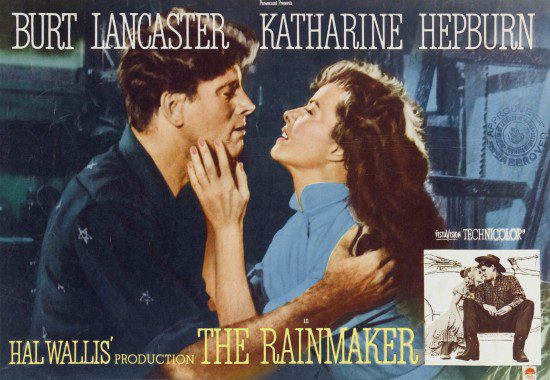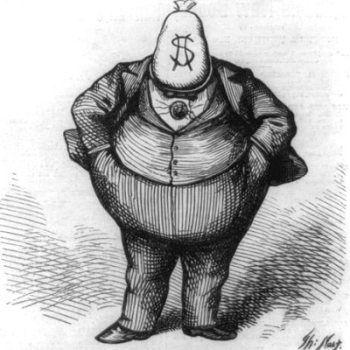The classics never get old: “‘Fortune teller’ arrested for fraud, Riverside police find snake, voodoo doll, satanic items.”
This isn’t the oldest one in the book because it dates back to before books were invented. A guy named Andres Pena Meneses allegedly scammed more than $50,000 out of his customers by telling them they were “cursed,” then offering to break the curse for them in exchange for a lot of money.*

I give Meneses credit for showmanship and flair. Meneses, whose clients knew him as “Carlos,” had this whole thing with mattresses — bring me the mattress you sleep on and I’ll spiritually inspect it to see if you’re cursed. That’s what all those accoutrements — the dolls and the snake and all the other spooky stuff — were for. Meneses would cut open the mattresses and “find” those cursed items inside, thus proving the expensive gravity of his customers’ plight. So even if the scam wasn’t terribly original, this guy was apparently able to palm a live snake, and that’s a lot more impressive than just pulling a quarter out of someone’s ear.
Meneses has been charged with grand theft and theft by false pretenses. Fortune-telling is legal in California. It’s a legitimate form of business … within limits. But you’re not allowed to invent “curses” and then to charge outlandish sums of money to lift those “curses” from your marks.
I imagine it wasn’t easy to write the laws in question here. Legal fortune-telling usually falls under the category of “entertainment.” So it’s fine to charge someone $20 for half an hour of being entertained with the time-honored storytelling conventions of that ancient trade. Given that, it’s also perfectly legal to charge someone $50 for an hour’s worth of entertainment that promises a longer ride with bigger thrills than you’d get for that standard $20. So the law allows you to charge for this service, and the law allows you to charge higher prices for a version of the service that promises a longer duration and a more intense experience. One could argue that this is what Meneses was doing here — that he was merely charging a super-premium price for a super-premium “entertainment” experience. Instead of $20 for a half-hour session, these clients received a weeks-long immersive experience, with all the usual thrills vastly heightened. (The guy pulled a live snake out of people’s mattresses — it’s understandable that he’d charge something extra for that.)
But somewhere between $20 and $50,000 there’s a legal line that Meneses crossed. Maybe 50 bucks or $100 of “entertainment” can be legally justified, but the law doesn’t view the people who handed over tens of thousands of dollars to have been legitimately entertained.
This all reminds me of The Rainmaker — the popular 1950s play by N. Richard Nash that was turned into a Hollywood movie starring Burt Lancaster and Katharine Hepburn. Starbuck, the charming con-man star of that play, comes to a drought-stricken small town in Kansas and promises them that he can make it rain — for a price. Starbuck isn’t selling rain so much as the promise of rain, which is to say he’s selling hope. It is, to be sure, false hope, but some people are willing to pay even for that and still be convinced that they got their money’s worth.
What’s a fair price for false hope? In California, apparently, it’s something a lot less than $50,000.
The main difference between Starbuck and “Carlos” is that the Rainmaker didn’t need to invent any imaginary “curses” before offering to lift them for a fee. The townspeople suffering from drought were already living under a curse before he got there. From one angle, I suppose, this makes Starbuck less dishonest, because he was dealing with a genuine “curse.” From another angle, it makes him more cruel, because his variation of the scam involves him preying on people who are already suffering and desperate.
Then again, regardless of the weather, plenty of people everywhere are already suffering and desperate. I would guess that many of Meneses’ victims had good reason to believe that they were “cursed,” and that he wasn’t so much skilled at convincing them of that as he was skilled at identifying people who were already dealing with enough hardship that the idea they were cursed didn’t seem like much of a stretch.
Meneses’ version of the scam is also a big improvement on Starbuck’s in that it doesn’t have to end with him fleeing town in the dead of night. Starbuck’s promise is specific and, therefore, measurable and falsifiable. Once he takes people’s money, he’s either going to have to make it rain or skip town before everyone realizes he can’t do that and demands a refund. The “curse” in Meneses scam is fuzzier. Its effects, and its lifting, can’t be easily measured, proved, or disproved. It can be spiritualized into intangible abstraction and metaphor.
This is why faith-healers tend to be itinerant preachers, while prosperity-gospel preachers are able to plant churches and settle down in mansion-compound “parsonages.” A skilled faith-healer, like a skilled rainmaker, is always going to be prepared to explain why the rain hasn’t started yet — offering explanations that always place the blame on someone else, and that probably require a bit more devotion/money to address. But ultimately sickness and injury are, like drought, too specific and too actual as forms of “curses” to keep the money rolling in for long before standing exposed as a fraud. The “prosperity gospel” keeps the curse more nebulous, making it impossible to say for sure whether the preacher’s promise of lifting that curse means anything real.
It’s the same scam. Identify a “curse” that is cause of every hardship facing your marks. Claim that you are uniquely able to dispel this “curse” — for a price. This is what sets “prosperity gospel” charlatans apart from the rest of clergy they purport to be. The message of sin and salvation that those other preachers proclaim is vaguely parallel, but they don’t offer themselves as the unique provider of a solution to this predicament, nor do they insist that it can only be provided in exchange for lots of money.**
“Prosperity gospel” charlatans like Kenneth Copeland and Paula White and Pat Robertson have built massive fortunes following the same basic outline that now has Andres Pena Meneses behind bars. They’re more careful, of course, scrupulously avoiding the kind of explicit fee-for-services quid-pro-quo that landed him in legal trouble. And I suspect that it helps that they rely on more respectably mainstream symbolism than the occult imagery and mumbo-jumbo employed by “Carlos.” “Fortune tellers” are seen as shady and suspect, while “evangelists” are given the benefit of the doubt as pillars of the community, thus shielding even transparent fraudsters like Copeland from closer legal scrutiny.
More importantly, Copeland maintains a plausible pretext of voluntary choice. He requests money from his flock, rather than demanding it, or else. The explicit “or else” is what really got Meneses into legal trouble. That and his greed — his unwillingness to settle for the tithe he could have collected from his marks, in perpetuity, and his attempt instead to land a big score by taking them for every penny.
Copeland also has something else that Meneses doesn’t have: Friends in high places. The closest he came to legal jeopardy was an investigation launched — and then timidly abandoned — by Republican Sen. Charles Grassley in 2007. Grassley had the goods on Copeland, White, Benny Hinn, Creflo Dollar, and several other “prosperity gospel” hucksters,*** but nothing came of that.
Grassley and his fellow Republicans realized that, yes, Kenneth Copeland was preying on hundreds of thousands of vulnerable people. But then they also realized but that because of that Copeland was able to guarantee that those hundreds of thousands of people would show up to vote for Republicans, no matter what. And after Republicans got clobbered in the 2008 elections Copeland and White and the rest were ensured that they’d face no consequences other than thanks for their service to the party.
* This scam isn’t just old, it’s also global. I had a part-time job in seminary working for a denominational international mission board. One of our missionaries had to be emergency furloughed stateside because he’d encountered a variation of this scheme in a small town in Zaire (now the Democratic Republic of the Congo). A rainmaker arrived in town, surveyed the local news for recent tragedies, then announced that they were all the result of a curse that he could lift — again, for a price. The guy apparently also had a profitable side-angle in which he would threaten people with identifying them as the source of the curse unless they paid him not to.
The grifter had this magic stick shtick that he used to frighten people and silence would-be doubters and the young missionary rashly decided that the best way to debunk the whole con would be to grab the “magic” stick from the man, break it over his knee, and thereby prove it was all a scam. Alas, this didn’t quite go according to his plan. As soon as he broke the stick, the rainmaker began to shout that he had unleashed all kinds of evil on the town, and he quickly identified the missionary himself as the source of the curse and of all the bad things that had ever happened there. Hence his emergency flight back to the States.
Breaking the con-man’s magic stick, one of my co-workers said, was “very clever, but not very smart.” He then told a story about a similar con-man he’d met during his years as a missionary among Burmese refugees in Thailand. That led to other stories from other former missionaries there — from Assam, and Haiti, and other countries — all of whom had encountered some variation of the same scheme in different languages, cultures, and continents.
** Think, for example, of AA. Yes, one could strain to make an analogy between AA and the scam practiced by “Carlos,” but the “curse” they’re addressing is real and would exist whether or not they mentioned it. And breaking that “curse,” they insist, has nothing to do with giving them money.
*** See, for example, “Senator Grassley and the Televangelists” and “When Chuck Grassley was ‘pwned’ by the televangelists.” The findings were jaw-dropping. This is what Grassley’s office learned about Copeland in 2011:
Televangelist Kenneth Copeland was less than forthcoming with Senator Grassley’s inquiries, even declining to reveal to Grassley the names of the 10 board members of Kenneth Copeland Ministries. Although KCM denied the existence of “integrated auxiliaries”, apparently subsidiaries, Grassley’s investigators found at least 21 that may have existed over the years, not including a 501(c)(3) called Pitcherman, Inc. which (with a board comprised of Kenneth, Gloria, and son John Copeland) exists to “receive charitable gifts from various entities, including offshore corporations and entities, and to distribute said monies to other qualified 501(c)3 churches, para-churches, ministries and evangelistic organizations…” Also not included were Copeland interests in an aviation company, an airport, and a horse and cattle ranch.
Grassley’s investigators couldn’t figure out if Kenneth Copeland received a salary or how much it might be, but he admitted at a KCM conference in 2008 that he is a billionaire. That must make wife, Gloria’s $400,000 salary in the early 2000s plus the honoraria they both get for KCM speaking gigs sort of inconsequential. Kenneth and Gloria live in an 18,000 square-foot home (the “parsonage”) on a 25-acre site owned by the televangelist’s religious operations, valued at $6,429,000 in 2008. The home also has three boat slips, and four boats (the ski-boat is stored in an airplane hanger on the site). Among the cars that have been registered in their names have been a 2007 Mercedes Benz S550, a 2005 XLR Cadillac Roadster Convertible and a 2003 Corvette Convertible.
The Copelands appear to be generous with family, employing parents, children, and grandchildren as salaried employees of the Church. Gloria’s brother Doug Neece, owner of a company called Integrity Media, was paid $20 million in 1996 and $22.4 million in 1997 for services to the church. More recent information wasn’t available. Son John was able to acquire three properties from the church for $73,000, the purchase occurring after the sites were determined to have an oil and gas producing field (the church owns several other producing gas wells). Board members have been generous with the KCM as well, including one who gave them a Citation 1 jet in 2007 (the church owns five aircraft). Generosity to the Church is generosity to the Copelands, as it appears that the church pays for most of their living and operating expenses. The jets for example have ferried Gloria to shopping trips in Naples, Fla., John on hunting trips, Kenneth to visit his chiropractor**** in Arkansas, and the family to another home in Steamboat Springs, Colo.
And here’s some of what they found about Paula White:
Like the other televangelists, WWIC and PWM make money from selling the tapes, DVDs, and books of their high profile religious leaders. In the case of the Whites, at least during 2004 and 2005, their tapes and books were produced by companies personally owned by Randy and Paula, with the church required to make inventory purchases from their companies of $541,000 and $330,000. In nonprofit parlance, those are called related party transactions, usually frowned upon.
WWIC specifically has a number of related organizations, including KABB Enterprises, apparently set up to purchase a Day’s Inn motel, and several nonprofits and for-profits located at WWIC’s address. Disentangling the financial flows of the Whites’ corporations without more disclosure than the Whites gave the Grassley investigators is impossible. Audited financials for WWIC alone showed revenues of $39.9 million in 2006 and a variety of interesting though vague expenditures, including an $880,000 housing allowance.
One accountant working for WWIC apparently quit after Randy White ordered him to have WWIC pay his personal $24,000 American Express card bill (including $13,000 for the purchase and installation of mirrors) even though that would have made the entity unable to make payroll that week. That’s a small bill compared to their rumored compensation levels – as much as $5 million in around 2004 or 2005. Although the report was never revealed, apparently Randy White presented a compensation study done by “The Strategic Compensation Group of America” to justify whatever the board of WWIC approved as his and Paula’s salaries. WWIC did provide information on its compensation to members of the family, which the Grassley report summarized as payments to “Paula’s son and Randy’s son, daughter, father and sister, up to $420,000, $560,000, $700,000 and $1,075,000 in tax years 2004, 2005, 2006 and 2007.”
Prior to the divorce, the Whites owned a $2.681 million home (improved with the addition of an in-ground pool and spa) in the Bayshore area of Tampa, and a $3.5 million condo in Trump Tower in New York City. The costs of these properties appear to have been paid for through the WWIC housing allowance. They liked cars too, driving among other vehicles a 2007 Bentley convertible. There must be something about Bentleys, as Paula gave Bishop T.D. Jakes a Bentley convertible as a 50th birthday gift. Randy is generous too, putting his post-divorce girlfriend and her parents on salary and authorizing WWIC to pay for plastic surgery for one of the organization’s pastors.
The ministry – either WWIC or PWM – purchased a Gulfstream GII for $1.2 million, but also pays for ferrying the Whites around by chartered flights. One source told Grassley’s investigators that the Whites chartered a flight to Las Vegas for a boxing match and were accompanied by sports personalities including Gary Sheffield, Darryl Strawberry, Michael Pittman, and Anthony Telford. The boxing match tickets alone, costing between $17,000 and $18,000, were charged to the WWIC AMEX card. Their chartered flights, particularly on a Learjet used predominantly by Paula, were frequently to “the islands” and often involved re-filing flight plans once out of U.S. airspace to head to the Cayman Islands.
And both Kenneth Copeland and Paula White have gotten twice as rich — and more than twice as powerful — over the past 10 years.
**** It gives me some small measure of comfort that Copeland sees a chiropractor. In a story otherwise devoid of justice and accountability, it’s good to know that the master fraudster is, himself, susceptible to fraud.












